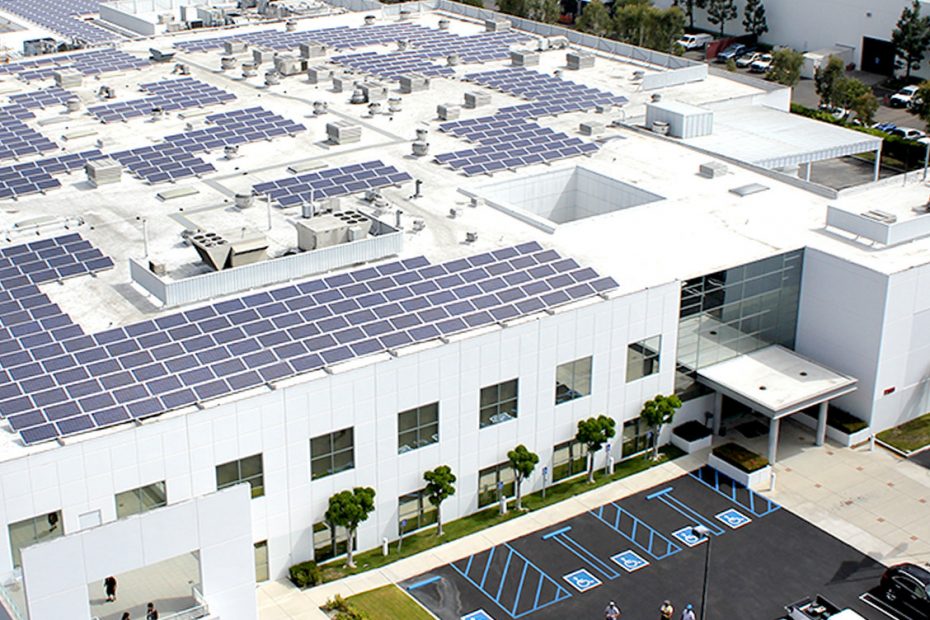Solar energy is considered to be one of the most efficient forms of energy, which is clean, sustainable, in addition to being highly cost-effective, making it less expensive when compared to other forms of fossil fuels-based energy. there has to be a major form of incentive for the Indian industry to install solar power to reduce the cost spent on energy.
With the growing population and the ever-expanding blooming economy, it is an undeniable fact that the energy consumption will also increase manifold. The conventional sources of energy i.e. the fossil fuels, the reserves of which are on the way to deterioration, will need a massive support in the form of renewable forms of energy – sun, wind, tidal, geothermal, nuclear – as there will be no way around it. This puts impetus as to why the Indian industry should install solar power with an increased intensity in the years to come.
Economical Viability
With continuous decrease in prices of solar products, installing solar for industries has turned profitable. Moreover Industrial states like Maharashtra, Gujarat ,Punjab etc have about 300 sunny days and good irradiance levels. So with help of both, break-even for solar plants can be achieved within as low as 3-4 years. The life of solar plants is for more than 25 years. Companies with a long overview can save huge money on their electricity bills. Projects are also eligible to earn carbon credits under the Clean Development Mechanism (CDM).
Calculate ROI for Solar Plants in India
Government Policies
Indian government is trying hard to shift to renewable energy sources. Indian Government has set a target to install 100 GW of solar plants by 2022. In process the government has several favourable policies for both industrial and domestic sectors. For the Industrial sector with an accelerated depreciation (AD) , your investment in solar gives you direct tax benefits. The Government of India, via RBI, has directed financing of solar plants to be identified as a Priority Sector by Public Sector Banks (PSUs). IREDA (Indian Renewable Energy Development Agency) provides low interest loans for financing solar power projects in India. SIDBI provides loans for Rooftop Solar Plants for industries.
Carbon Footprint of India
Over the past years, India is incessantly working to boost its solar energy production to reduce the dependence on fossil fuels. It is an unsettling fact that India is the third largest emitter of greenhouse gasses (GHG) with 4.5% contribution to global emissions, right behind the United States of America and China. Though it can be a bit uplifting for the nation that its per-capita emission is considerably below the average at the global level. Even with ample solar energy availability, the major sources of carbon emission in India are the coal power plants (which is the major source of power for the industries), vehicular emissions, cattle, agriculture residue burning, emissions from factories, etc., which have been rising uninterruptedly over the years. This also puts focus on the need to modernise the energy sector and push for the Indian industry to install solar power, one of the largest users of multiple forms of energy, for its sustainability.
Current Status of Solar Energy in India
With the focus on reducing global carbon emissions to mitigate the damage brought on by climate change and slowly to reverse it, the investment in solar energy has to be remarkably increased. From small households to big industries, people have begun to see the countless benefits of solar energy. After the Paris Agreement, India has also pledged to shift 40% of electricity production to non-fossil-based sources, primarily focusing on solar energy, by the year 2030. This commitment puts responsibility on the Indian industries to install solar power, the most optimum step for the sustainable future.
Important Figures –
- Year 2019 – India installed 7.3 GW solar power to become the 3rd largest producer of solar energy globally
- 68 per cent market share of solar energy projects development was dominated by the top 10 project developers
- India has the world’s biggest sole-location solar park in Andhra Pradesh’s Kurnool with 900 MW commissioned and having the great potential for generating 1,000 MW
- The Indian state of Gujarat is currently the front runner in solar power which contributes the nation’s two-third photovoltaics. Asia’s second largest solar park has been commissioned in the state’s Charanka village with the plan to establish 500 MW generation while 2 MW is already being generated.
- In the past 3 years, India has successfully expanded its solar generation capacity by as much as 370%.
- The Indian Government has earmarked Thar Desert’s 35,000 square kilometres of region for solar power projects, enough to generate between 700 to 2,100 GW of power.
